When designers and integrators need simple, flexible and compact linear actuation, they often turn to stepper motor linear actuators (SMLAs). The high configurability of SMLAs is among their greatest virtues, but sorting through myriad configuration options to tailor the optimal solution for a particular application can be a challenge for even the most seasoned motion engineer. Understanding the unique capabilities and limitations of each type of SMLA will make it easier to take maximum advantage of their wide range of flexibility.
Why SMLAs?
Many factors make SMLAs desirable for linear actuation, with their high levels of customization and configurability being the biggest. Their efficient design enables configuration of countless motor, lead screw and lead nut options into a unique assembly for each application.
SMLAs are also popular because the stepper motor affords a basic level of control without requiring external feedback devices such as encoders. The designer can program a stepper motor to move to an exact position at various resolutions without requiring any feedback to a driver or controller. This can make the overall cost and complexity lower than servos, brushless DC and other motor options.
Stepper motors and lead screws are also naturally compatible, which contributes to the high configurability of the SMLA. This natural fit is evident when it comes to optimal speed ranges, load capacities and positional accuracies.
Additionally, lead screws and stepper motors offer many available options for customization. Lead screws, for example, can be customized for end-machining, coating, accuracy, thread form and length, while stepper motors offer options to optimize motor windings for torque and speed, and to specify application-specific cabling, connectors, encoders, and end cap machining. Integrating stepper motors with lead screws dramatically increases the number of possible designs.
SMLA Types
Although the number of possible combinations is high, SMLAs are generally available in three distinct styles: rotating screw, rotating nut and telescoping. (Figure 1)

Figure 1.The three types of SMLAs (left to right: rotating screw, rotating nut and telescoping) feature unique mechanics that make them ideal for varying applications.
Each of the SMLA styles consists of the same general components: a stepper motor (1), lead screw (2), and lead nut (3), but as shown in Figures 2-4, the core mechanics differ based on the role of the nut.
Rotating Screw Structure and Mechanics
The rotating screw configuration, which is also known as a motorized lead screw, external linear, external nut or translating nut, allows for the most design flexibility and customization. As the name implies, actuation occurs when the lead screw rotates. When properly restrained to prevent it from rotating with the lead screw, the lead nut will translate across the threaded length of the lead screw.

Figure 2. Cutaway view of a rotating screw configuration.
Rotating Nut Structure and Mechanics
The rotating nut assembly has the most minimal and compact design of the three configurations. This design allows for the shortest retracted and overall length while having virtually no visible rotation of any of its components. Other names for this style of actuator are motorized lead nut, non-captive, internal nut and translating screw.
The mechanics of a rotating nut SMLA are essentially the inverse of the rotating screw configuration. When the motor is driven, the integrated lead nut within the motor shaft rotates and induces the lead screw attached to a load to translate in and out of the motor.
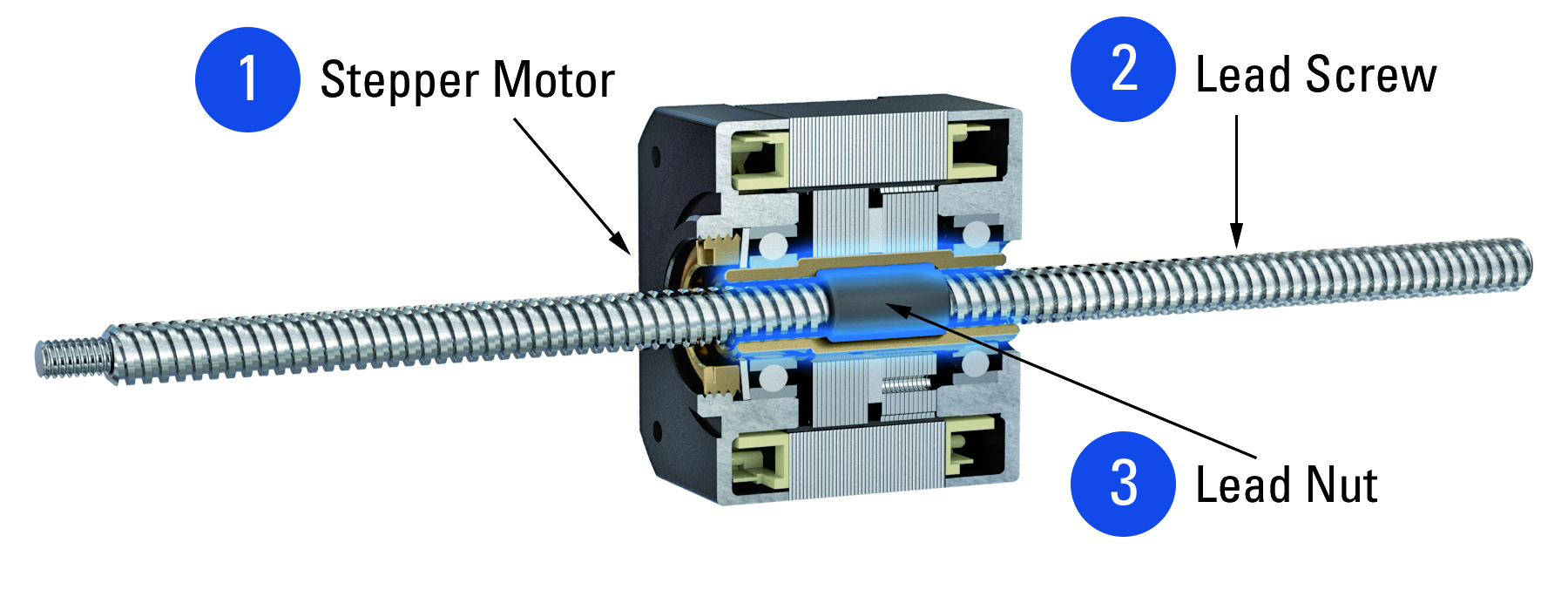
Figure 3. Cutaway view of a rotating nut configuration.
Telescoping Structure and Mechanics
Telescoping style actuators are intended to perform more like the traditional rod-style actuators found in most industrial applications, while still having the benefits of a configurable stepper motor and lead screw-based unit. At its core, the telescoping actuator is a rotating screw configuration with extra housing components that “capture” the lead nut within a spline and use an internal bushing to provide some side and moment load support. Because these configurations incorporate guidance and support directly into their design, in many cases, they won’t need the external components that might otherwise be required. Other names for this style of actuator are motorized lead screw actuator, captive, electric rod and electric cylinder.
The mechanics of a telescoping SMLA are similar to those of a rotating screw configuration. The key difference is that its configuration integrates guidance and support components in the form of a splined cover tube and extension tube with a support bushing, which allows motion without the need for external components.
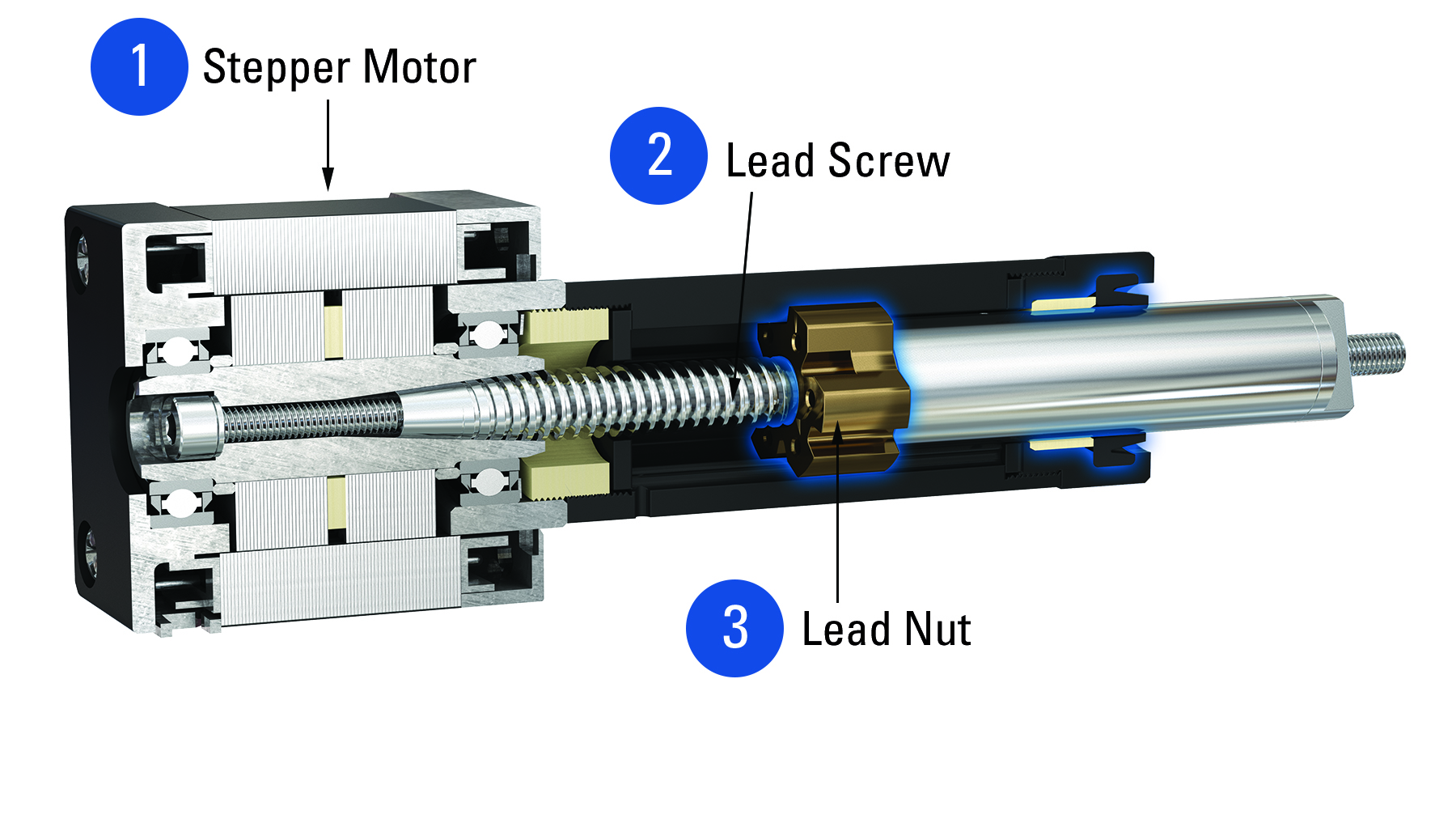
Figure 4. Cutaway view of a telescoping style configuration.
Installation
All three SMLA configurations have a similar installation process, which consists mainly of mounting the motor, supporting the lead screw if needed and attaching the load. The key differences lie in where the load attaches and how it is supported. (Figure 5) For rotating screw configurations, the load attaches to the lead nut, and the end of the lead screw will need to be supported with a bearing or bushing for longer lengths.
For rotating nut configurations, the load is attached to the lead screw. And for the telescoping configuration, the load will be attached to the end-mounting on the extension tube.
Both rotating screw and nut configurations are meant to withstand axial loads only, so guidance and support in the form of linear bearings and guide rails will be required for proper function. Since guidance and support are typically integrated into telescoping actuators, the need for linear bearings and guide rails can be eliminated in many scenarios.
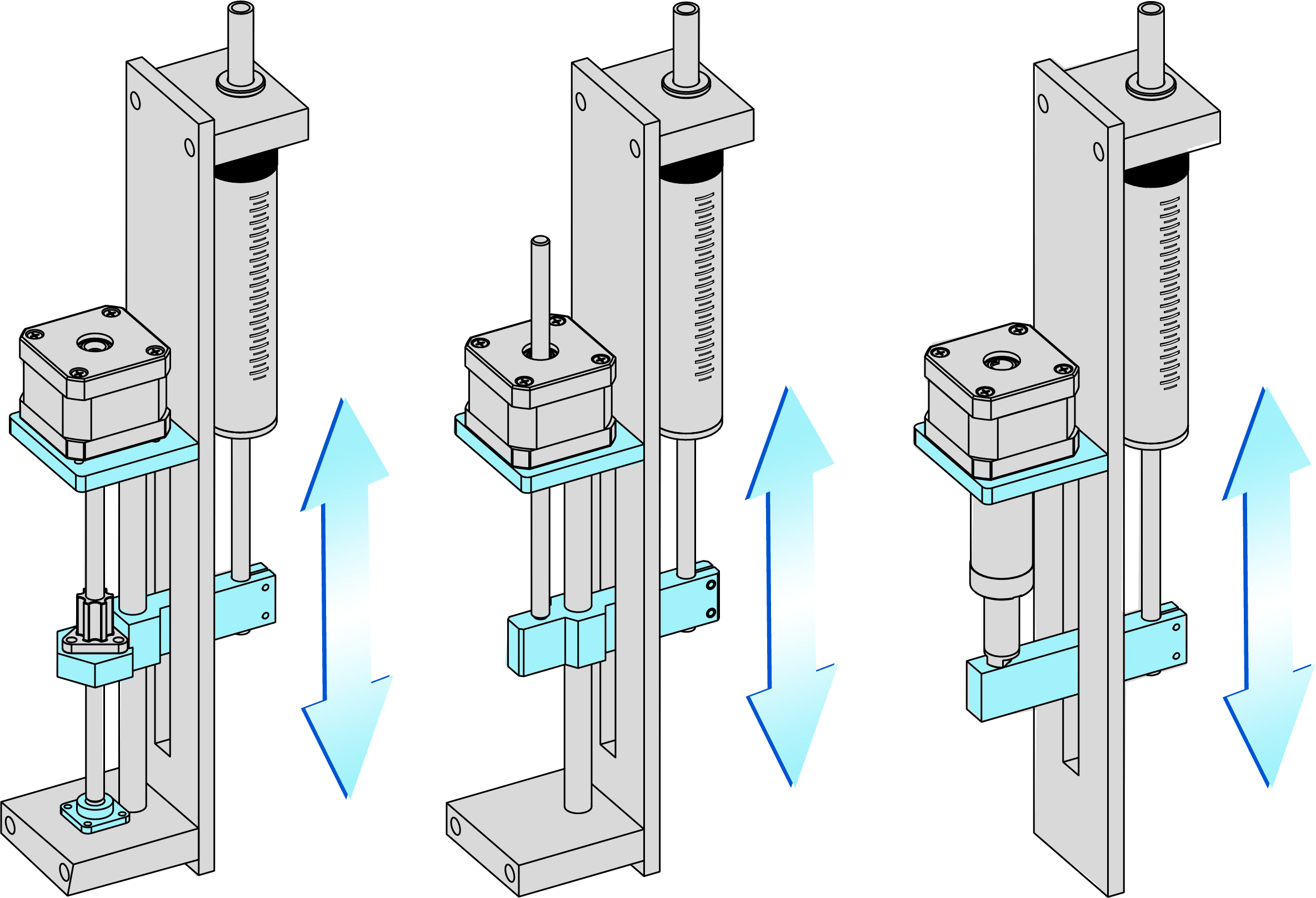
Figure 5. This fluid pump application example illustrates the typical mounting configurations for all three SMLAs (left to right: rotating screw, rotating nut, telescoping).
Sizing for Applications
The SMLA’s high levels of customization and configurability lend it to countless application possibilities. Figure 6 shows a few common examples of SMLA applications.
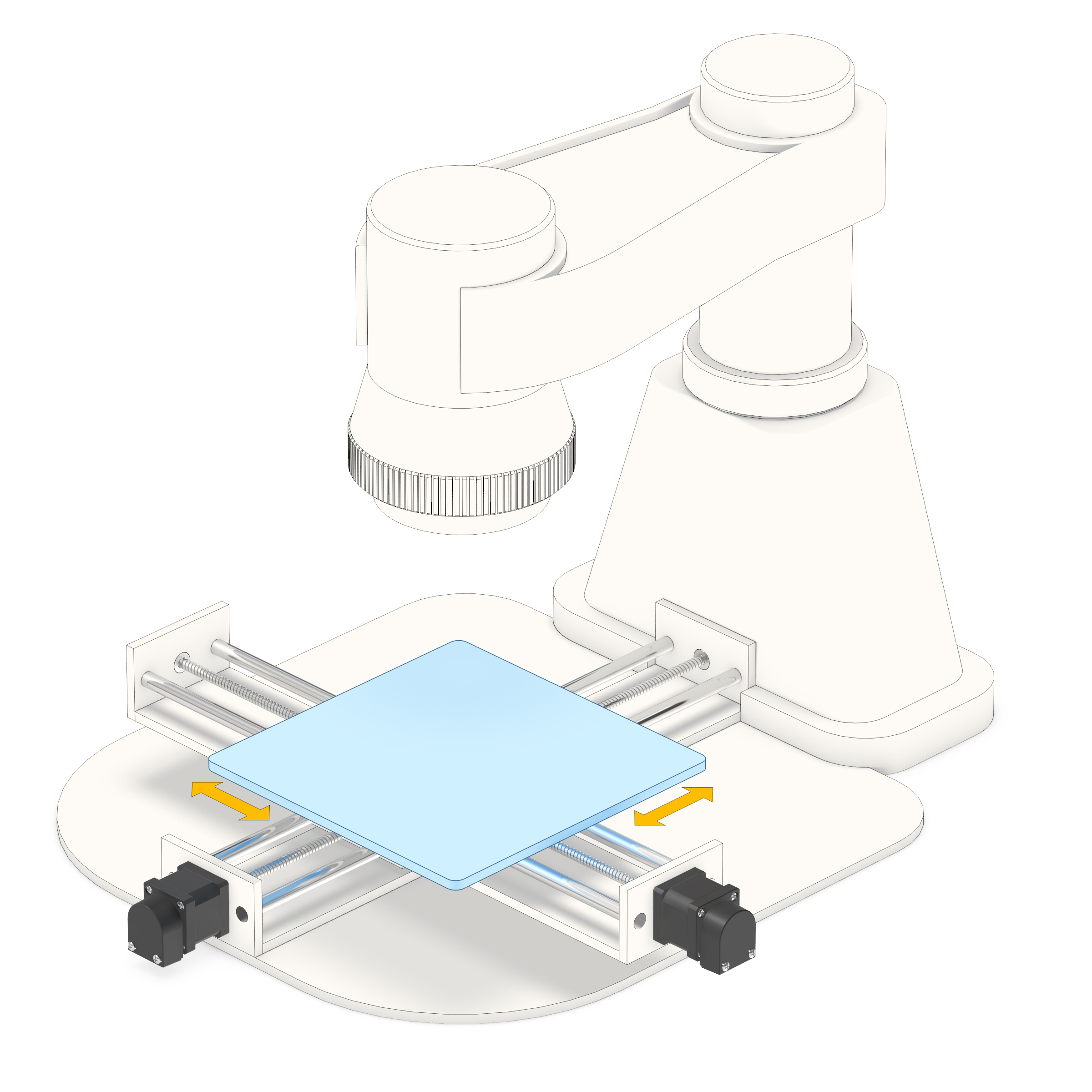
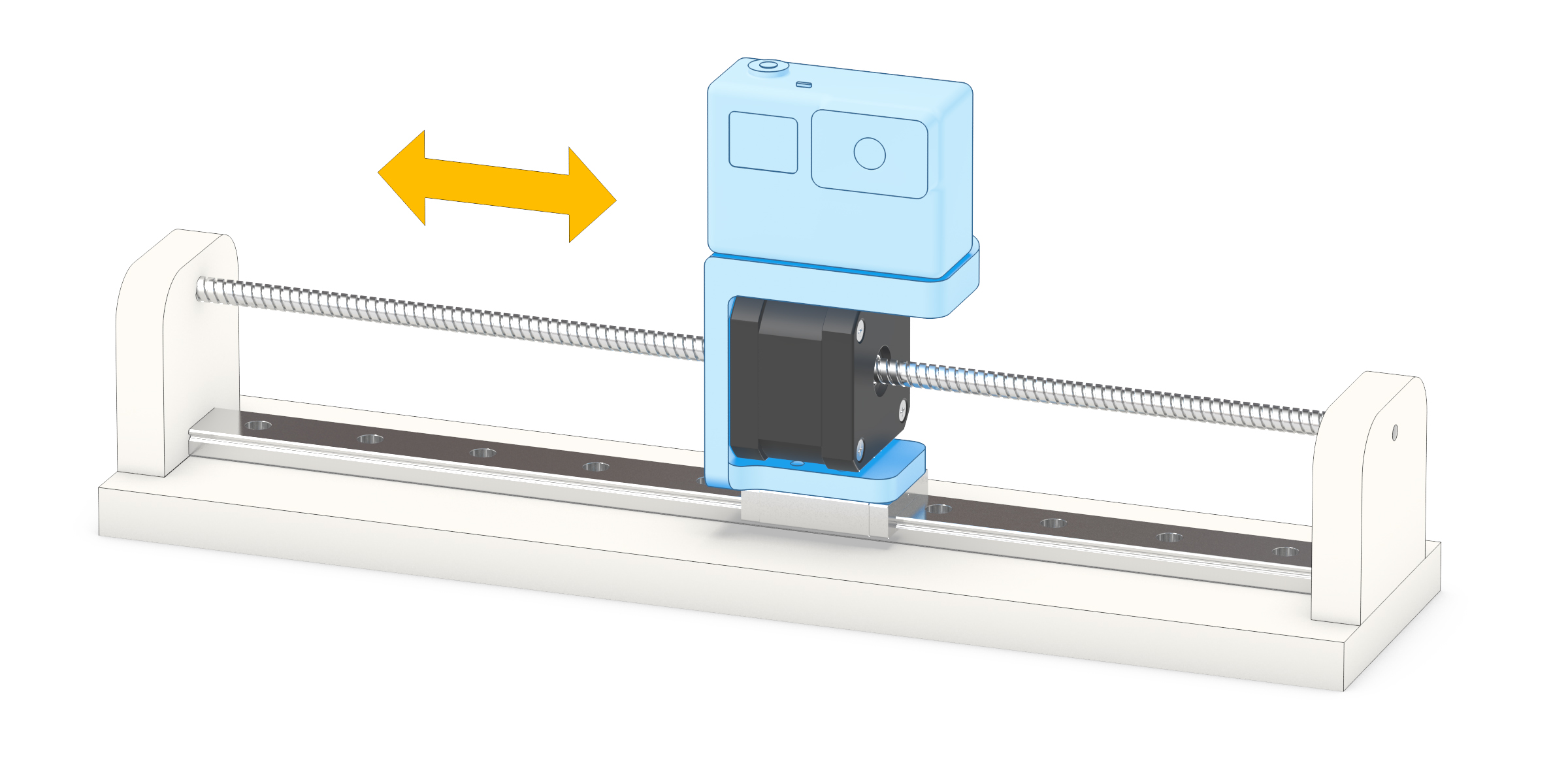
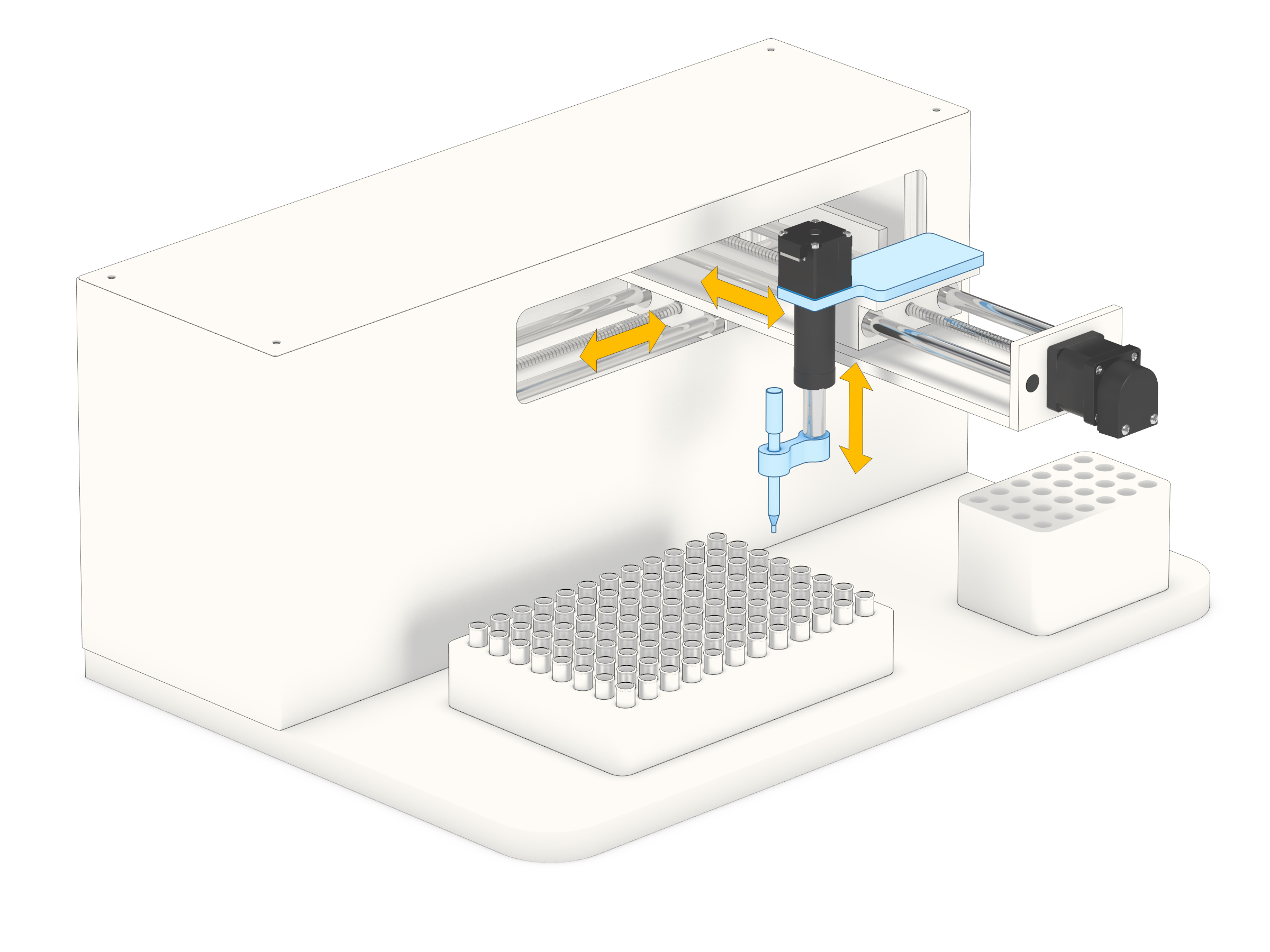
Figure 6. By reducing the total number of components needed, SMLAs are ideal for a wide variety of space-conscious applications, including (left to right): XY stage (rotating screws), horizontal positioning (rotating nut), and fluid pipetting (telescoping and rotating screw).
Sizing an SMLA for a specific application then, mainly involves understanding the motor, lead screw and lead nut limitations. Each of these core components must be sized appropriately to ensure proper functionality and optimal life. Luckily, most manufacturers provide theoretical performance plots that consider these components, making it much easier to size an actuator quickly. These plots will usually take the form of a speed vs. load curve, and highlight the optimal performance range of the motor, screw and nut combination.
Comparing SMLAs
SMLAs enable a modular motion system design approach that allows engineers to achieve a solution that is highly tailored to their specific application requirements. Determining which of the three SMLAs is best depends on many application-driven factors.
Those seeking maximum customization or a truly unique combination of components should consider rotating screw actuators. Rotating screw designs are the most commonly deployed type of SMLA, so many engineers will already be quite familiar with them.
Applications that would benefit from a more compact, simpler actuator and that do not require an anti-backlash nut or many encoder options might be better served by rotating nut designs. Engineers who prefer to drop in a more traditional, rod-style actuator design and whose applications would benefit from integrated guidance, support and built-in anti-rotation should consider the telescoping design. This configuration is also worth considering if reducing the overall component count is important because the integrated guidance/support components eliminate the need to purchase external ones. Table 1 summarizes the most common strengths and weaknesses of each SMLA configuration, as well as a few common application examples.
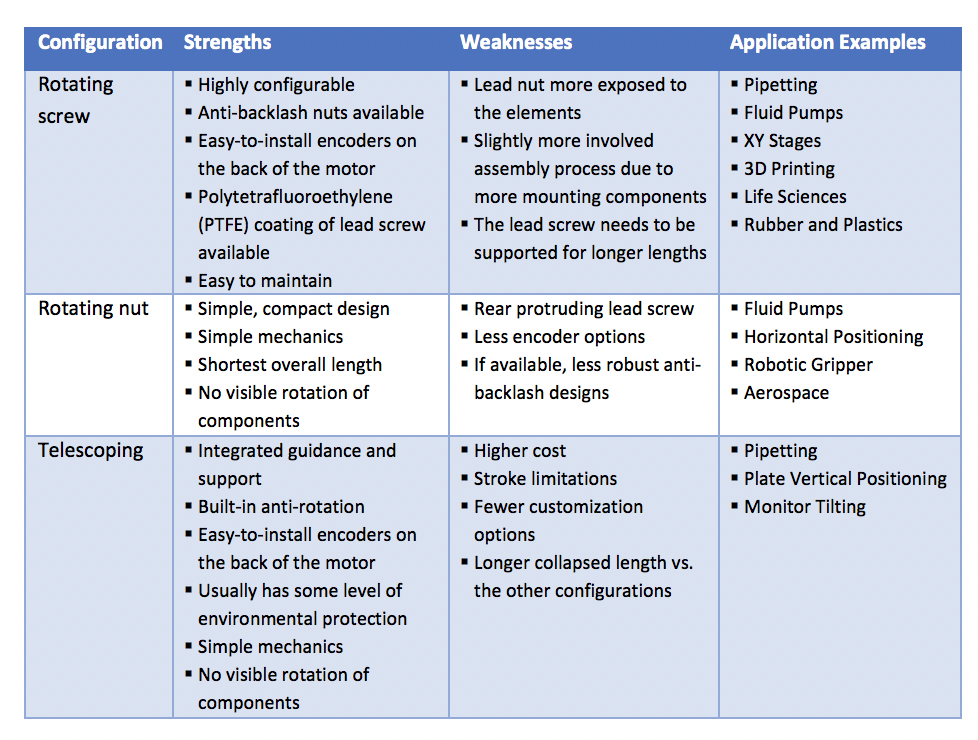
To help designers and integrators wade through the many options, SMLA manufacturers are increasingly offering online tools to help them quickly and easily configure solutions for their applications. For example, there are online selector tools that allow users to identify the right SMLA for their application in a matter of minutes, while immediately accessing performance characteristics, 3D models, pricing and lead time.
Applying automated selection tools in the context of an understanding of the design, mechanics, installation and sizing of the three main SMLA types can help guide motion designers and integrators to the optimal choice for their applications.
When designers and integrators need simple, flexible and compact linear actuation, they often turn to stepper motor linear actuators (SMLAs). The high configurability of SMLAs is among their greatest virtues, but sorting through myriad configuration options to tailor the optimal solution for a particular application can be a challenge for even the most seasoned motion engineer. Understanding the unique capabilities and limitations of each type of SMLA will make it easier to take maximum advantage of their wide range of flexibility.
Why SMLAs?
Many factors make SMLAs desirable for linear actuation, with their high levels of customization and configurability being the biggest. Their efficient design enables configuration of countless motor, lead screw and lead nut options into a unique assembly for each application.
SMLAs are also popular because the stepper motor affords a basic level of control without requiring external feedback devices such as encoders. The designer can program a stepper motor to move to an exact position at various resolutions without requiring any feedback to a driver or controller. This can make the overall cost and complexity lower than servos, brushless DC and other motor options.
Stepper motors and lead screws are also naturally compatible, which contributes to the high configurability of the SMLA. This natural fit is evident when it comes to optimal speed ranges, load capacities and positional accuracies.
Additionally, lead screws and stepper motors offer many available options for customization. Lead screws, for example, can be customized for end-machining, coating, accuracy, thread form and length, while stepper motors offer options to optimize motor windings for torque and speed, and to specify application-specific cabling, connectors, encoders, and end cap machining. Integrating stepper motors with lead screws dramatically increases the number of possible designs.
SMLA Types
Although the number of possible combinations is high, SMLAs are generally available in three distinct styles: rotating screw, rotating nut and telescoping. (Figure 1)

Figure 1.The three types of SMLAs (left to right: rotating screw, rotating nut and telescoping) feature unique mechanics that make them ideal for varying applications.
Each of the SMLA styles consists of the same general components: a stepper motor (1), lead screw (2), and lead nut (3), but as shown in Figures 2-4, the core mechanics differ based on the role of the nut.
Rotating Screw Structure and Mechanics
The rotating screw configuration, which is also known as a motorized lead screw, external linear, external nut or translating nut, allows for the most design flexibility and customization. As the name implies, actuation occurs when the lead screw rotates. When properly restrained to prevent it from rotating with the lead screw, the lead nut will translate across the threaded length of the lead screw.

Figure 2. Cutaway view of a rotating screw configuration.
Rotating Nut Structure and Mechanics
The rotating nut assembly has the most minimal and compact design of the three configurations. This design allows for the shortest retracted and overall length while having virtually no visible rotation of any of its components. Other names for this style of actuator are motorized lead nut, non-captive, internal nut and translating screw.
The mechanics of a rotating nut SMLA are essentially the inverse of the rotating screw configuration. When the motor is driven, the integrated lead nut within the motor shaft rotates and induces the lead screw attached to a load to translate in and out of the motor.

Figure 3. Cutaway view of a rotating nut configuration.
Telescoping Structure and Mechanics
Telescoping style actuators are intended to perform more like the traditional rod-style actuators found in most industrial applications, while still having the benefits of a configurable stepper motor and lead screw-based unit. At its core, the telescoping actuator is a rotating screw configuration with extra housing components that “capture” the lead nut within a spline and use an internal bushing to provide some side and moment load support. Because these configurations incorporate guidance and support directly into their design, in many cases, they won’t need the external components that might otherwise be required. Other names for this style of actuator are motorized lead screw actuator, captive, electric rod and electric cylinder.
The mechanics of a telescoping SMLA are similar to those of a rotating screw configuration. The key difference is that its configuration integrates guidance and support components in the form of a splined cover tube and extension tube with a support bushing, which allows motion without the need for external components.

Figure 4. Cutaway view of a telescoping style configuration.
Installation
All three SMLA configurations have a similar installation process, which consists mainly of mounting the motor, supporting the lead screw if needed and attaching the load. The key differences lie in where the load attaches and how it is supported. (Figure 5) For rotating screw configurations, the load attaches to the lead nut, and the end of the lead screw will need to be supported with a bearing or bushing for longer lengths.
For rotating nut configurations, the load is attached to the lead screw. And for the telescoping configuration, the load will be attached to the end-mounting on the extension tube.
Both rotating screw and nut configurations are meant to withstand axial loads only, so guidance and support in the form of linear bearings and guide rails will be required for proper function. Since guidance and support are typically integrated into telescoping actuators, the need for linear bearings and guide rails can be eliminated in many scenarios.

Figure 5. This fluid pump application example illustrates the typical mounting configurations for all three SMLAs (left to right: rotating screw, rotating nut, telescoping).
Sizing for Applications
The SMLA’s high levels of customization and configurability lend it to countless application possibilities. Figure 6 shows a few common examples of SMLA applications.



Figure 6. By reducing the total number of components needed, SMLAs are ideal for a wide variety of space-conscious applications, including (left to right): XY stage (rotating screws), horizontal positioning (rotating nut), and fluid pipetting (telescoping and rotating screw).
Sizing an SMLA for a specific application then, mainly involves understanding the motor, lead screw and lead nut limitations. Each of these core components must be sized appropriately to ensure proper functionality and optimal life. Luckily, most manufacturers provide theoretical performance plots that consider these components, making it much easier to size an actuator quickly. These plots will usually take the form of a speed vs. load curve, and highlight the optimal performance range of the motor, screw and nut combination.
Comparing SMLAs
SMLAs enable a modular motion system design approach that allows engineers to achieve a solution that is highly tailored to their specific application requirements. Determining which of the three SMLAs is best depends on many application-driven factors.
Those seeking maximum customization or a truly unique combination of components should consider rotating screw actuators. Rotating screw designs are the most commonly deployed type of SMLA, so many engineers will already be quite familiar with them.
Applications that would benefit from a more compact, simpler actuator and that do not require an anti-backlash nut or many encoder options might be better served by rotating nut designs. Engineers who prefer to drop in a more traditional, rod-style actuator design and whose applications would benefit from integrated guidance, support and built-in anti-rotation should consider the telescoping design. This configuration is also worth considering if reducing the overall component count is important because the integrated guidance/support components eliminate the need to purchase external ones. Table 1 summarizes the most common strengths and weaknesses of each SMLA configuration, as well as a few common application examples.

To help designers and integrators wade through the many options, SMLA manufacturers are increasingly offering online tools to help them quickly and easily configure solutions for their applications. For example, there are online selector tools that allow users to identify the right SMLA for their application in a matter of minutes, while immediately accessing performance characteristics, 3D models, pricing and lead time.
Applying automated selection tools in the context of an understanding of the design, mechanics, installation and sizing of the three main SMLA types can help guide motion designers and integrators to the optimal choice for their applications.


